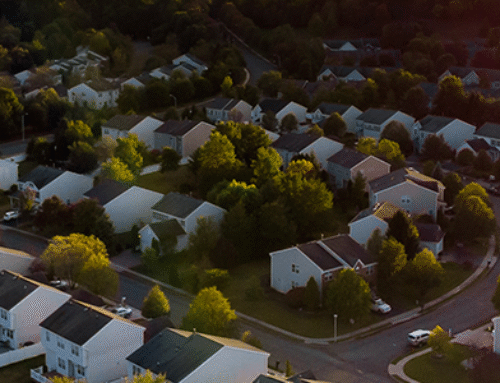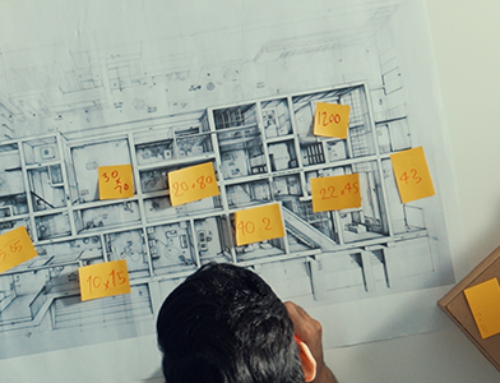One major pressure is the cost of resources. After the extreme price volatility of recent years, material costs have largely stabilized – one index even recorded a slight year-over-year decrease in overall construction material prices by late 2024. However, labor expenses continue to climb unabated. Skilled trade wages rose roughly 6% year-over-year, reflecting the premium needed to attract scarce talent. With wages and subcontractor bids rising faster than what many project budgets account for, builders are finding that higher input costs directly erode their once-reliable gross margins.
Labor availability remains a critical challenge behind these rising costs. A shrinking construction workforce has made it difficult (and expensive) to staff jobs with experienced crews. Nearly four in ten contractors say there’s a strong need for greater workforce training and development to close the skills gap. Even as overall industry hiring slowed in late 2024, the median construction worker’s age has trended younger (below 42 for the first time since 2011) – meaning a larger share of the field labor force is relatively inexperienced. Firms must spend more on recruitment, training, and retention to maintain quality, which directly increases operating costs and can lead to schedule delays that further dent profitability.
Competitive pressure in the marketplace has also intensified. In late 2024, 27% of contractors reported a significant uptick in competition for jobs compared to the previous quarter. With more bidders vying for a limited pool of projects, many contractors feel compelled to trim margins on bids to win work. This crowded environment makes it harder to pass increased costs on to clients.
At the same time, today’s homeowners and developers are extremely budget-conscious. Consumer surveys indicate that economic uncertainty and high living costs have made clients more price-sensitive, often delaying or scaling back projects unless they see clear value. In fact, project cancellations in 2024 were frequently driven by timing/scheduling issues or material availability, alongside homeowners simply deciding to hold off. All these dynamics – rising costs, labor shortages, intense competition, and cautious customers – are creating strong profit pressures for residential construction businesses as 2025 unfolds.
🔵 Facing Profit Pressure? Create a Strategic Plan with Your BPA
Margins are shrinking, but the right plan can unlock new growth. Start your 2025 Business Plan of Actions to protect profitability.
High-Impact Strategies for Margin Growth
Facing these headwinds, leading residential construction firms are doubling down on efficiency, innovation, and strategic management to protect their bottom line. Profitability in 2025 will favor companies that trim waste, optimize operations, and differentiate their services in the eyes of clients. The following high-impact strategies can help boost margins and improve financial resilience:
- Rigorous Financial Management: Establish disciplined budgeting, job costing, and monthly financial reviews to catch problems early. Builders who monitor their finances closely (including work-in-progress and cash flow reports) achieve net profit margins around 6% on average – significantly higher than the ~4% margins of less vigilant peers. Detailed oversight of project expenses and timely adjustments (e.g. cutting unnecessary expenditures or renegotiating contracts) can directly improve profit per project.
- Streamlined Project Delivery: Tighten up project schedules and workflows to avoid costly overruns. Efficient project management – from accurate estimating and value engineering to aggressive timeline control – is essential for margin protection. Delays and scope creep eat into profits, so use scheduling software and lean construction practices to keep every job on track.
- Workforce Development and Efficiency: Invest in your team’s productivity to counter labor cost pressures. This includes training apprentices, upskilling existing staff, and improving on-site processes so that a smaller crew can accomplish more. Implementing standardized procedures and cross-training employees can help maintain high workmanship with fewer people.
- Strategic Bidding and Client Selection: Focus on quality leads and client segments that value your expertise rather than competing solely on lowest price. Differentiate your services to justify a healthy margin, and use escalation clauses in contracts to protect against price spikes. Avoid clients who demand deep discounts and prioritize high-value opportunities.
- Diversification into High-Demand Niches: Expand services in growth areas like energy efficiency upgrades, smart home integrations, or aging-in-place renovations. These services allow for premium pricing, and many are supported by incentives that increase customer ROI and contractor margins alike.
🔵 Unlock Margin Gains: Make These Strategies Actionable with a BPA
Don’t just know what to do—build the systems to do it consistently. A BPA gives your business a customized blueprint.
Adapting Operations to a Shifting Economic Landscape
Beyond individual tactics, residential construction business owners need to foster an agile operational mindset in 2025. The economic landscape is shifting in real time – from interest rate changes to evolving consumer preferences – and companies must be ready to adjust course.
A pivotal adaptation is aligning business operations to where the demand is. With 30-year mortgage rates hovering around 7% and U.S. housing affordability near a two-decade low, many homeowners are choosing to renovate rather than relocate. This “lock-in” effect (homeowners staying put to keep their low mortgage rates) is driving more remodeling and addition projects.
Contractors should calibrate their offerings to serve this trend, focusing resources on renovation work, accessory dwelling units, and retrofits that leverage owners’ high home equity. Surveys confirm that remodelers, mechanical trades, and finish contractors carried healthy backlogs into late 2024, whereas exterior-focused firms (roofing, siding, window replacement) saw a dip in confidence as that segment cooled.
The lesson is that flexibility in project mix is crucial – if one category (e.g. new custom home builds) slows down, shifting emphasis to other growing categories can keep revenue flowing. Meanwhile, as macro conditions improve and new home construction is forecasted to pick up slightly each quarter of 2025, builders should be prepared to scale back up – securing land, permits, and skilled subcontractors in anticipation of a potential rebound in housing starts.
Operational agility also means planning for multiple scenarios. Business owners would be wise to run contingency plans for both a mild recession and an unexpected boom. Maintaining a lean overhead and healthy cash reserves is prudent given today’s uncertainty. If project volumes dip, a leaner operation can ride it out with lower fixed costs; if demand surges, that cash can fund rapid hiring or equipment investments.
The ability to pivot quickly in response to economic indicators (like mortgage application rates or consumer confidence shifts) can make the difference between seizing an opportunity and missing it. One of the biggest threats to home improvement activity is uncertainty itself – when consumers feel unsure, they delay big projects.
To counter this, contractors are finding ways to instill confidence and keep projects moving: for example, offering price guarantees within a certain timeframe or providing financing options to clients to hedge against rate swings. By proactively addressing client concerns about the economy, firms can prevent hesitation from stalling their project pipeline.
Another area of adaptation is in supply chain and procurement strategy. The past few years taught builders harsh lessons about material volatility and lead times. In response, many firms have diversified their supplier base and tightened communication with vendors.
If a key product becomes delayed or overpriced, savvy contractors switch suppliers or substitute materials to avoid work stoppages. This kind of agility – having backup suppliers, ordering critical items early, and tracking inventory closely – helps protect project timelines and budgets.
Builders should also stay alert to external changes like new building codes or government incentive programs. For instance, federal and state incentives for energy-efficient upgrades (such as HVAC replacements or solar installations) not only generate client interest but can also offset costs; contractors who adjust their offerings to incorporate these incentives can win business that might otherwise not proceed.
In short, adapting operations in 2025 means staying informed and responsive: whether it’s adjusting crew allocations week by week, negotiating bulk material purchases when prices dip, or leveraging technology to gain real-time insights, the goal is to remain one step ahead of economic shifts. Construction companies that cultivate this flexibility will be best positioned to safeguard their profitability and even thrive in the face of a changing market landscape.
Profit in 2025 Requires More Than Hard Work—It Requires a Plan
In today’s construction economy, working harder is no longer enough. Residential builders and remodelers must work smarter—with intentional operations, targeted marketing, and systems that control costs and protect margins. With labor pressures rising and client expectations shifting, a clear, strategic plan has become a prerequisite for profitability.
That’s exactly what the Business Plan of Actions (BPA) from Small Business Growth Partners is designed to provide. This construction-specific tool goes beyond a traditional business plan—offering customized insights, proven frameworks, and hands-on support to help builders grow profitably, improve systems, and lead with confidence.
With over 4,000 BPA plans delivered to builders, remodelers, and trade companies nationwide, SBGP has become the most trusted name in strategic business planning across the construction industry. And it’s not just for your company. Many builders are encouraging their subcontractors and trade partners to complete a BPA as well—because when everyone on a project operates with structure, clarity, and shared goals, outcomes improve across the board.
A BPA helps:
- Builders battling rising costs, tight margins, or inconsistent processes
- Remodelers scaling their services without increasing stress
- Subcontractors looking to stabilize operations and build long-term success
- Teams who want alignment, better communication, and stronger project delivery
If the goal is to grow with less chaos—and to build a business that works just as well off the jobsite as on—it starts with a BPA.
Sources: The Farnsworth Group Q4 2024 Contractor Index; Mortenson Construction Cost Index Q4 2024; Association of Professional Builders, 2025 State of Residential Construction Industry Report; Farnsworth Group, Construction Industry Outlook 2025; Farnsworth Group research on housing market trends; Farnsworth Group analysis of contractor challenges and opportunities.





